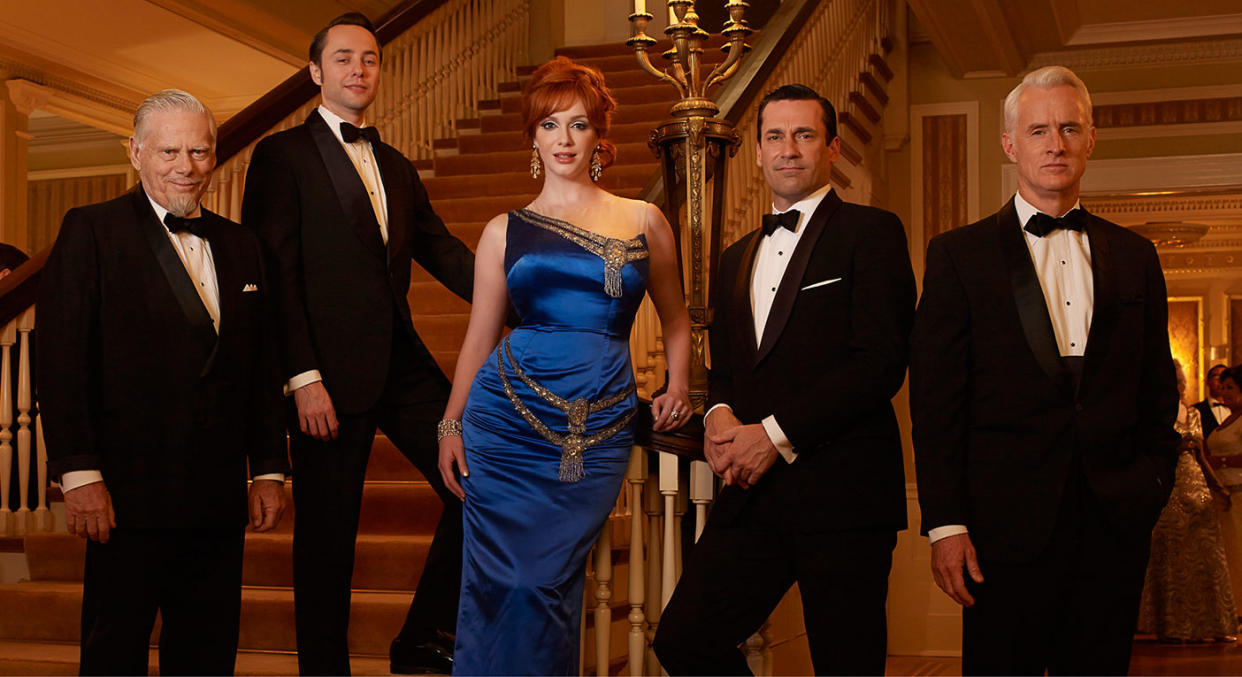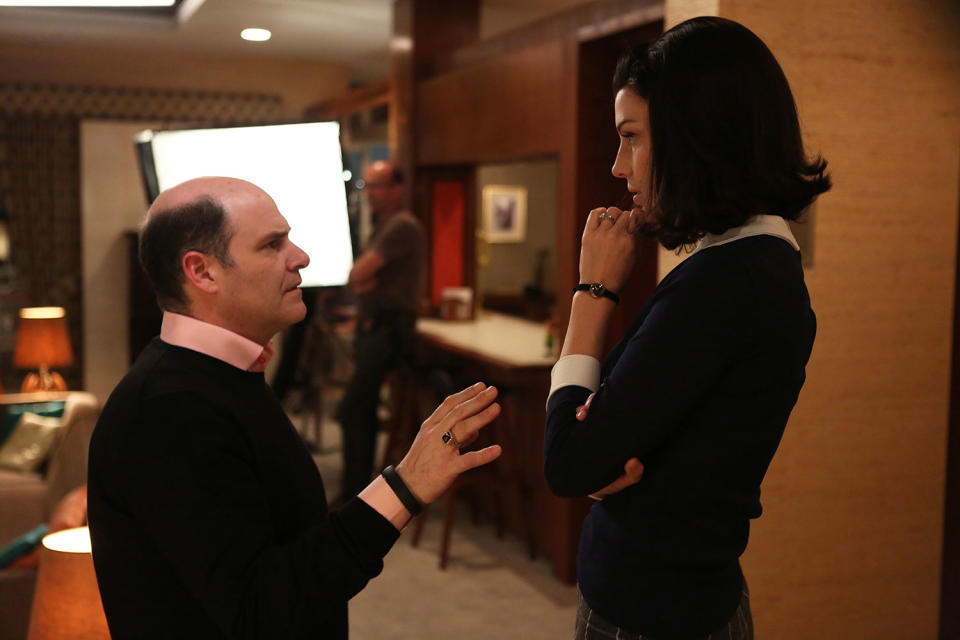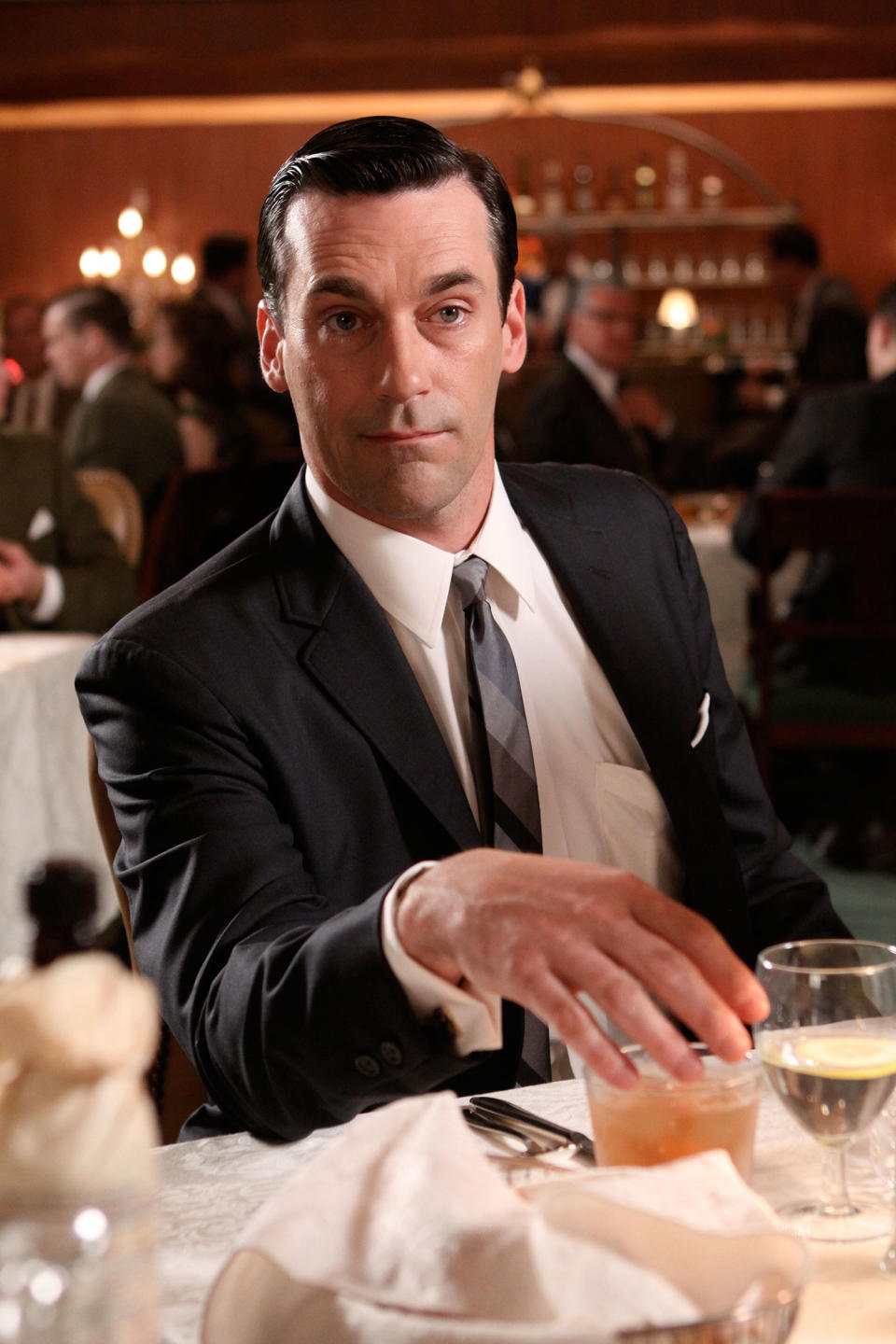How Mad Men changed premium television forever

Mad Men is a show that, on paper, should never have worked.
A slow-paced character drama set in 1960s America about inter-office politics at an advertising agency, written by the writer of a Ted Danson sitcom, starring some guy you’ve never heard of and airing on some basic cable channel you’ve never seen? It’s a miracle that Donald Draper ever made it through the pilot: instead, over the course of nine years, seven and a half seasons and 92 glorious episodes, the star of Mad Men evolves from an enigmatic closed book to a man who eventually achieves nirvana.
The tao of Don Draper – and the story of Mad Men’s success – is the story of how American television came of age, and how it changed premium TV forever.
A near miss for HBO
Before it was a cultural touchstone and a multi-award winning juggernaut, nobody really gave Mad Men much of a chance. Creator Matthew Weiner was working on Ted Danson’s small-screen comedy Becker in 1999 when he wrote a spec script called ‘Smoke Gets In Your Eyes‘, the drama that would eventually form the basis of Mad Men’s pilot episode.

The script eventually landed on the desk of David Chase, who would hire Weiner to work on episodes in The Sopranos final seasons. HBO would have picked up Weiner’s ad agency series if Chase came onboard as executive producer, but he declined and ultimately America’s most prestigious cable network let the decade’s biggest small-screen success story slip through their fingers.
Then HBO CEO Richard Plepler would later admit that failing to pick up Mad Men was his equivalent of failing to sign The Beatles, calling it “inexcusable”.
AMC takes a punt
Weiner continued shopping the show around the networks to no avail, until eventually he pitched to AMC, an unassuming basic cable network that still bore the initials of its original function: the American Movie Channel would mostly show, well, American movies, and most of them made pre-1950 at that.
In order to compete with other cable networks and an increasingly diverse and fragmented marketplace, AMC was expanding to include original programming – and they wanted Mad Men to be their first original series. It’s fair to say they rolled the dice, but the risky acquisition of Mad Men would transform the network’s fortunes completely, and contribute to the decentralisation of American television.
The Don
Mad Men had a home, Weiner had a show, and the show had its star – a commanding actor by the name of Jon Hamm, whose quiet but considerable presence had been wasted on bit-parts in the likes of Charmed and Gilmore Girls.
His first ever role, in an episode of Ally McBeal, was billed as ‘Gorgeous Guy at Bar’ – if nothing else, Hamm lived up to that early promise.

Men wanted to be him, women wanted to be with him, tailors wanted to dress him: Hamm would redefine what it meant to be a man in the new millennium, even while portraying Don Draper as a womanising drunk. His performances are nothing short of mesmerising, and though the supporting cast are crucial to the show’s lasting success, Jon Hamm is Don Draper is Mad Men. You have to think that Thomas Jane, the first choice for the role, couldn’t have gone on quite the same journey.
Meteoric rise
Mad Men aired on July 19th, 2007, and was an instant hit with the critical community, who adored its period detail, its jet black wit and its dramatic rigour. It would go on to be named the Best TV Show Of The Year by The New York Times, Time Magazine and TV Guide; Rolling Stone would later call it “the greatest TV drama of all time”.

Though it never pulled Two And A Half Men audience numbers, it wasn’t that kind of show; it was TV for adults, featuring complex stories about complicated people that didn’t appeal to the primetime crowd. Mad Men was slow paced – glacial at times – but it was the antithesis to big-budget primetime TV: reserved, considered and unshowy.
Cultural shift
The show evolved, from satirising the era in which it was set, to just plain living in it. Soon, viewers would flock to buy the exact brand of Don Draper’s summer holiday sunglasses; the Old Fashioned cocktail enjoyed a resurgence; even President Obama was a fan – he wrote a complimentary letter to Matthew Weiner expressing his love for the show, and even dropped a reference into his State of the Union address (“It is time to do away with workplace policies that belong in a Mad Men episode”).
Draper and his colleagues at Sterling-Cooper would agonise over finding that elusive je ne sais quoi that made a product appealing – whatever it was, Mad Men had it, and then some.

As the show continued to rack up awards – five Golden Globes, four Primetime Emmys and seventeen nominations – AMC benefited more than anyone from Mad Men’s success. Mad Men and AMC were one and the same: the network sank millions into advertising the show from its second season onwards, decorating New York’s Grand Central station with gigantic ads and dotting skyscraper-sized ‘falling man’ billboards around the city.
‘Businessmen’ would walk the streets handing out Sterling-Cooper business cards to promote the show; Mad Men ads played in cinemas before the main features; the show became one of the most talked about and most pirated programmes on the planet due to the slow international uptake.
Mad Men mania had taken hold and AMC knew it had a winner on its hands. The gamble had paid off.
The birth of a powerhouse

Ultimately, the shine of Mad Men allowed AMC to extend its remit and attract more original programming.
In 2008, the channel debuted the next critical darling of the decade in Breaking Bad, taking a risk on a show about a meth-dealing chemistry teacher that was considered too edgy for the mainstream. Two years later, it premiered The Walking Dead, the hugely successful adaptation of the comic-book series, which would revitalise the zombie genre on both small and big screens, and would go on to become the most-watched and highest-rated scripted TV programme in basic cable history.
Not bad for a basic cable channel who were still taking baby steps into the wider world of TV.
Imitation is the sincerest form of flattery

The term ‘basic cable’ was no longer sufficient: HBO had their hits, certainly, but the best shows on TV weren’t only airing on premium channels any more. Critics began to talk of a new “golden age” of television, with Mad Men the jewel in the crown. TV writer Alan Sepinwall said of the show: “[Mad Men] carried us forward from one great era in television into another, staying constant in its style, its vision and its greatness even as the TV world churned mightily around it.”
Networks desperately wanted their own Mad Men imitator; period pretenders like ABC’s Pan Am, NBC’s The Playboy Club and BBC’s The Hour pitched for our attention but held it for about as long as it took Don Draper to down another drink.
You can still see the DNA of Mad Men in shows that are still running today, like The Americans, The Knick and Amazon’s 1950s housewife drama The Marvelous Mrs Maisel.
The legacy of Mad Men

It’s impossible to fully estimate just how much of an impact Mad Men has had on television in the last decade.
Without Mad Men, there would be no AMC; without AMC, there is no Walter White or Rick Grimes; without AMC’s big draws, maybe Netflix don’t need to invest quite so much in original programming to compete.
Thrillingly, the complex and competitive landscape of TV in 2018 can all be traced back to Don Draper née Dick Whitman, scribbling on a napkin in a cocktail bar, trying to figure out a way to flog cigarettes.
On paper, it shouldn’t have worked. But, as Don Draper spent his adult life figuring out, sometimes all you need to do is have faith in one good idea and you can change the world.
Read more
TV is now better than movies
The biggest Game of Thrones plot holes
Mind-blowing Game of Thrones Easter eggs

 Yahoo News
Yahoo News 
